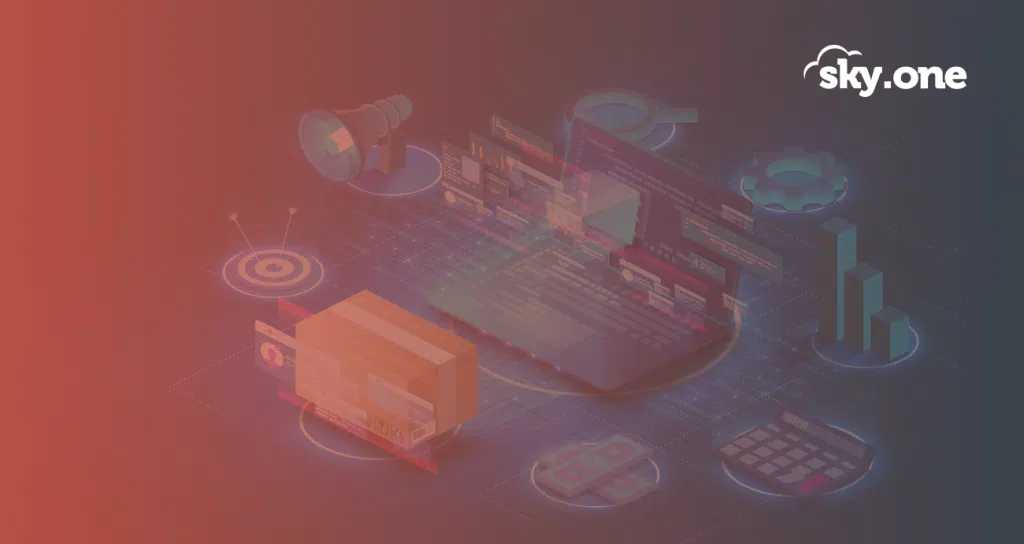The process of integrating systems in the industry is helping dozens of companies to become more productive and competitive in the market.
This is one of the most popular concepts with industry 4.0 and is a strong trend among enterprises with production lines.
According to the Global System Integration Market Outlook , systems integration is forecast to grow from $45.63 billion in 2020 to $60.8 billion in 2026, yielding a CAGR of 4.9% over the 2022-2027 forecast period.
Want to understand more about how this technology works? Keep reading the article and we'll explain everything to you!
What is systems integration in industry and how does it work?
Integrating systems in industry means automatically connecting different processes in a production line, such as the production chain, logistics or distribution.
That is, it works by interconnecting different areas of a company, being one of the main pillars of Industry 4.0 — a phase marked by automation and integration of different technologies.
In addition to the process of connecting the systems and exchanging information between the devices, there are eight other pillars that are also worth knowing:
- Internet of Things: is the concept of connecting industry machines to the internet;
- Cloud computing: consists of a database that you can access from anywhere — and share too.
- Big data: this is the storage and analysis of various data from various sources.
- Additive manufacturing: creation of objects from 3D printing.
- Robotics: use of artificial intelligence and machine learning in robots to perform different functions.
- Augmented reality: it is the superposition of virtual elements in the real world.
- Simulation: is the ability to view the factory's production environments virtually in order to have better control of the processes.
- Cybersecurity: consists of data protection to prevent attacks on the organization's data.
When we talk about integrating systems in the industry, we use several of these pillars, such as IOT technology and Cloud Computing, in order to exchange data quickly, efficiently and securely, increasing the company's productivity.
5 advantages of integrating systems in industry
1. Increased productivity
As information passes to different areas of the company in a much faster and more automated way, processes are more agile , as well as a significant reduction in the execution time of a task. In addition, possible reworks are avoided.
For example, if sector A needs information from sector B, it will not be necessary to call the other area and wait for the information to be sent, after all, the systems are integrated and everyone now has access to the data they need.
In addition, the automated system also allows the manager to monitor all the company's processes. Thus, it is possible to identify errors and improve management in less time and more efficiently.
2. Cost reduction
As we know, time is money, and one of the great advantages of integrating systems in the industry is the reduction of errors and manual work, which contributes to the productivity of the team , which now has more time to focus its efforts on the core business .
Also, with automatic workflows, the manager also benefits from a 360º view of the business, which allows for more assertive and efficient decision-making, reducing the risk of bad decisions motivated by incomplete or inaccurate data.
That is, with all the data at your disposal, it is easier to make an analytical and assertive decision about the operation. Not to mention that you can still use the graphics and information available in real time to monitor the performance of a sector, for example.
3. Greater security
Another advantage of investing in systems integration, which can, for example, be carried out through an iPaaS such as Skyone Data, is that your business now has a 100% cloud platform that complies with LGPD and data encryption .
Thus, cybersecurity practices are expanded, mitigating the risks of data leakage or attacks on the system.
Therefore, an integrated system ensures greater reliability and protection of your business data, as they adopt strict security standards, with authentication and encryption.
Horizontal vs Vertical Integration: What's the Difference?
There are two integration models: horizontal and vertical . They complement each other and help make the operation more efficient. Let’s take a look at its main features below:
horizontal integration
In this model, the objective is to connect the internal information to the external information of the industry.
This integration allows, for example, the connection between company data with suppliers and customers.
Thus, you can:
- Manage suppliers;
- Analyze the market;
- Organize the logistics;
- Check the distribution of products;
- Delivery progress.
In addition, this way of integrating systems in the industry makes it possible for different sectors to act together to optimize production, as well as for changes to occur simultaneously in all systems at once.
vertical integration
It refers to the sharing of information within the company itself from the hierarchical levels of the factory.
Vertical integration enables the manager to analyze the shop floor, the leader to analyze the manager, and so on. It's like a pyramid in which each step accesses specific information.
How to integrate the systems in your industry?
Now, how to make this integration in your industry?
1 – Define your demands and goals
The first step is to know what you want to integrate, since this directly influences the contracting of your consumption package.
You can integrate:
- Processes and flows;
- Number of transactions;
- Systems or applications;
- APIs, databases or files.
Your consumption volume needs to be estimated in gigs. You can hire packages of 3,000, 10,000, 30,000… It all depends on your needs.
2 – Choose a good integration software
Then you need to choose the platform that will carry out this integration as per your needs. Remember to opt for software with an intuitive, functional and secure interface.
With Skyone Data, for example, you manage all your integrations through a single, simple and secure system, integrating all software and automating your company's processes.
Read too:
Skyone Data: why integrate systems with Skyone iPaaS?
3 – Customization of the system
After deciding on your software , you will need to configure and customize the system according to your business needs. Therefore, the importance of doing the first step well to get the system well optimized for the business.
4 – Prepare the team
Analyzing the productivity of our clients' teams, we noticed that up to 30% of the development effort is focused on providing the necessary integrations of their solutions with the rest of the ecosystem.
The detail is that each integration is customized for each need, so there is very little reuse of routines and need for continuous training of the IT team.
One way to integrate systems with greater agility and less cost is through Low-Code platforms.
With regard to the training and qualification of your team, these platforms, in addition to being easy to use, speed up the development process, since you do not need to write all the code for a project manually, making it much simpler for employees to use. .
Learn more about how integrations with Low-Code platforms can contribute to the success of your business:
Low-Code: understand what it is and what are the advantages for the IT team
Do you want to know how to add more intelligence and increase your production performance without having to create new systems and applications?
This free material will help you make your business more strategic based on data-based decisions!




